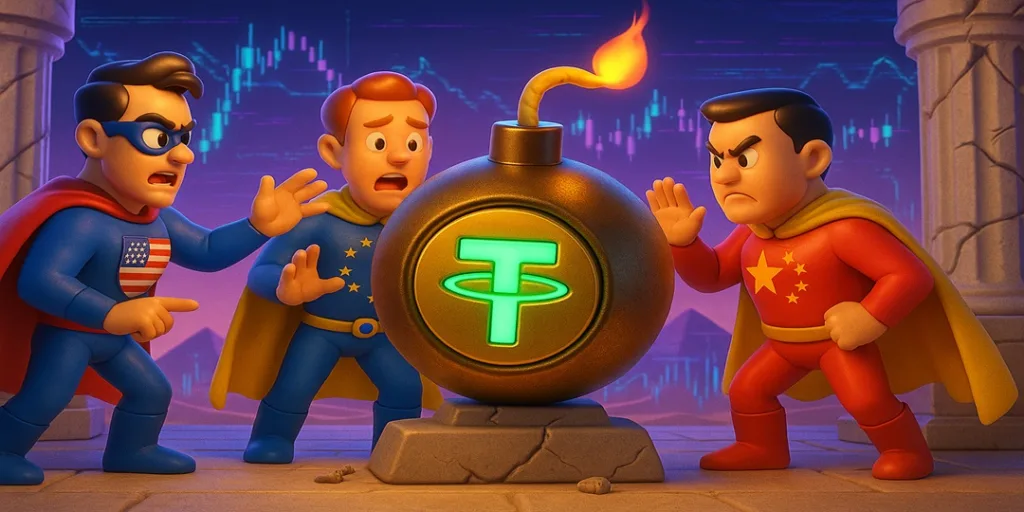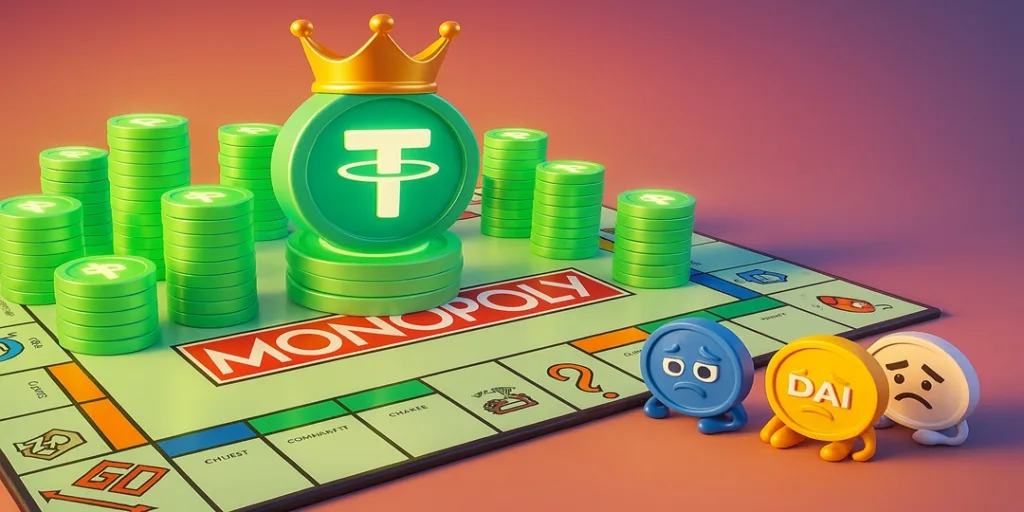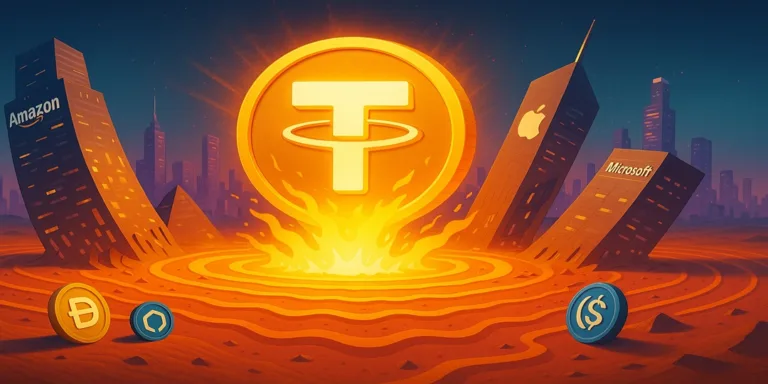The word “stablecoin” used to sound niche, something crypto traders whispered about on Telegram while wiring money across borders. Today, it is front-page finance. Tether $500 billion valuation goal has turned what was once a side note in crypto markets into a headline that competes with the likes of Apple, Microsoft, and Amazon.
If the stablecoin giant reaches this number, it won’t just dominate crypto; it will tower over global fintech, standing shoulder-to-shoulder with the world’s largest companies. That is both impressive and deeply unsettling.
Why is Tether $500 billion everywhere?

Tether has become the bloodstream of crypto. Its dollar-pegged token, USDT, is used for:
- Trading pairs on nearly every exchange
- Cross-border transfers where banking access is weak
- A hedge for investors who want “dollars” without leaving the blockchain
Every day, billions of dollars flow through Tether. In regions like Latin America, Africa, and parts of Asia, it often substitutes for unstable local currencies. This explains why Tether $500 billion valuation doesn’t feel unrealistic; it has scaled beyond crypto into global finance.
The comparison to big tech
Here’s where it gets shocking: if Tether hits $500 billion, it would rival some of the world’s most valuable companies. Apple and Microsoft built empires on hardware and software. Amazon conquered logistics and e-commerce. Tether, by contrast, built dominance on a single promise: one token equals one dollar.
But unlike Apple or Amazon, Tether isn’t selling iPhones or delivering packages. It’s holding reserves, issuing tokens, and promising convertibility. The simplicity is powerful. The risks are enormous.
The regulatory time bomb

The more viral Tether’s 500 billion gets, the louder the questions become:
- How transparent are its reserves?
- What happens if regulators crack down?
- Could a systemic shock ripple into global markets?
Stablecoins were once ignored by policymakers. Not anymore. The U.S., Europe, and Asia are drafting frameworks to control how stablecoins operate. With Tether $500 billion valuation dominating the market, it becomes too big for regulators to ignore and possibly too big to fail.
Concentration of power

Another concern is concentration. Tether already commands the majority of stablecoin liquidity. If it dwarfs rivals like USDC or DAI, it effectively becomes the monopoly dollar of the internet. That makes it convenient for users but dangerous for competition and stability.
For everyday investors, the rise of Tether means one thing: stablecoins are no longer niche. They are the infrastructure of crypto, and they could soon become mainstream financial products in the U.S. The question is not if stablecoins will enter the average portfolio, but when.
Final note
The ambition of Tether $500 billion valuation is both a milestone and a warning. It shows how quickly crypto-native products can outgrow their origins. But it also raises the question: can one company really anchor the digital dollar economy without cracking under pressure?
Stablecoins were built on trust. The higher the valuation climbs, the more that trust will be tested.














